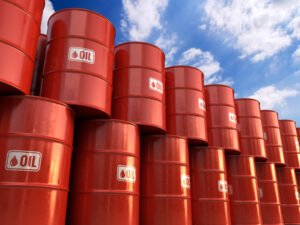Reasons We Need Crude Oil
Petroleum is a liquid substance at normal temperature and pressure conditions, it varies in color from deep black to light green or clear in its lighter forms. It is a set of complex chemical compounds, where the main composition is dominated by the elements hydrogen and carbon, in addition to other elements that vary according to the type of crude oil.
Created by a process taking millions of years, crude oil needs the existence of microorganisms deposited by aquatic or wind conditions, which, thanks to time, pressure, and temperatures, allow chemical changes to occur, breaking down the elements and form them to what we know as crude oil. The time and process makes it a non-renewable resource in our lifetime.
What is the oil used for?
Oil was born as an alternative to certain sources of energy and heat generation, but its evolution over time has transformed it into the precious black gold, capable of shaking economies and the reason for multiple wars around the world. What makes it an indispensable element are its many uses:
Main uses of oil
- Transportation: Transportation can be of merchandise, products, or people. The entire transportation system of the world depends on oil. Gasoline, gas for vehicles, and diesel are the main sources of energy for all types of modern transport vehicles.
- Industrial power: Oil is the main source of industrial energy. Diesel, gas and gasoline are used in thermoelectric plants for the constant production of energy.
- Heating and lighting: The heavier oils are used in central heating plants for shops, offices and homes. Oil is also used to produce electricity for industrial and domestic use. Lighter grades of oil, such as “kerosene”, continue to be used for domestic purposes.
- Lubricants: Lubricants are valuable for all types of machines, especially for machines used in transportation and industries. All types of lubricants and greases are produced and many industries would grind to a halt without them.
Use of by-products
Crude oil is a mixture of carbon, hydrogen, impurities, and a few other components. The refining process separates various fractions of hydrocarbons and it is in this process that the secondary elements of the oil are converted into raw materials.
When most people think of petroleum, gasoline and diesel fuel come to mind. They may even conjure up images of jet fuel, but you’ll rarely consider the other unexpected places petroleum by-products show up in modern life. Because crude oil contains a host of different hydrocarbons, various refined products have found their way into everything from plastics to pharmaceuticals.
- Agriculture: One of the most important uses of petroleum is in the production of ammonia which is used as a source of nitrogen in agricultural fertilizers. At the beginning of the 20th century, a process was developed that allowed the industrial-scale production of ammonia. Prior to that time, ammonia for fertilizer could only be obtained from manure and other biological processes.
- Plastic: Plastic is a staple of modern life and is an integral aspect of many manufactured products. Polystyrene, from which Styrofoam is made, and polyvinyl chloride (PVC), are both products of post-World War II industrialization. Nylon, which can be found in socks or mechanical gears and even in car engines, is the most successful petroleum plastic to date. Most plastics come from olefins, which include ethylene and propylene.
- Tires: The main raw material for tires is rubber. Until 1910 all rubber was produced from natural elastomers obtained from plants. The need for synthetic rubber was relatively small until World War II, resulting in embargoes on natural rubber from South America and the need to produce synthetic rubber on a large scale. Rubber is primarily a product of butadiene.
- Pharmaceuticals: Mineral oil and petrolatum are petroleum by-products used in many creams and topical pharmaceuticals, and tar is used for psoriasis and dandruff. Most drugs are complex organic molecules which are based on smaller and simpler organic molecules. Most of these precursors are petroleum by-products.
- Dyes, detergents and others: Petroleum distillates such as benzene, toluene, xylene and others provide the raw material for products including dyes, synthetic detergents, and fabrics. Benzene and toluene are the starting materials used to make polyurethanes, which are used in surfactants, oils, and even to varnish wood. Even sulfuric acid has its origin in the sulfur that is removed from oil.
Oil has been exploited for more than 160 years, and for more than 100 years it has been responsible for moving the world, ranging from personal cars to airplanes and mega-ships, and at the same time, it has become the raw material for products from automotive manufacturing to fundamental elements in the health sector.
The importance of crude oil for today’s world continues to be crucial, although renewable energies are receiving more and more support, hydrocarbons, more than a source of energy, are an inexhaustible source of solutions for the maintenance of modern life as we know it today. With the human population growth of about one billion people every 12 years, the world’s need for crude oil will always be there.

